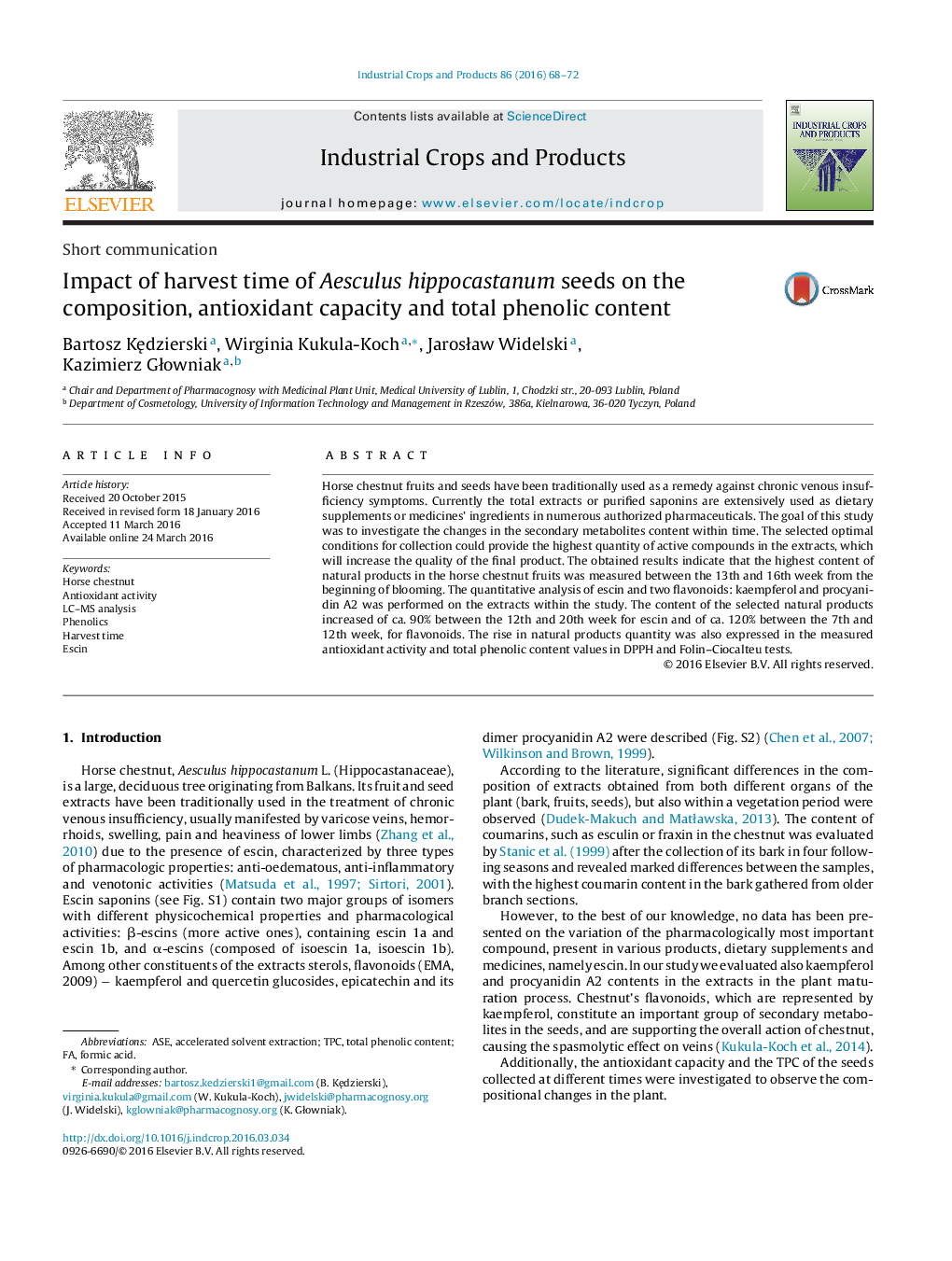| Article ID | Journal | Published Year | Pages | File Type |
|---|---|---|---|---|
| 4512519 | Industrial Crops and Products | 2016 | 5 Pages |
•Harvest time influenced flavonoids and saponins content in the extracts.•The highest quantity of escin and kaemferol was found in 14–16th week of maturation.•The antioxidant capacity was dependant on the harvest time.
Horse chestnut fruits and seeds have been traditionally used as a remedy against chronic venous insufficiency symptoms. Currently the total extracts or purified saponins are extensively used as dietary supplements or medicines’ ingredients in numerous authorized pharmaceuticals. The goal of this study was to investigate the changes in the secondary metabolites content within time. The selected optimal conditions for collection could provide the highest quantity of active compounds in the extracts, which will increase the quality of the final product. The obtained results indicate that the highest content of natural products in the horse chestnut fruits was measured between the 13th and 16th week from the beginning of blooming. The quantitative analysis of escin and two flavonoids: kaempferol and procyanidin A2 was performed on the extracts within the study. The content of the selected natural products increased of ca. 90% between the 12th and 20th week for escin and of ca. 120% between the 7th and 12th week, for flavonoids. The rise in natural products quantity was also expressed in the measured antioxidant activity and total phenolic content values in DPPH and Folin–Ciocalteu tests.
